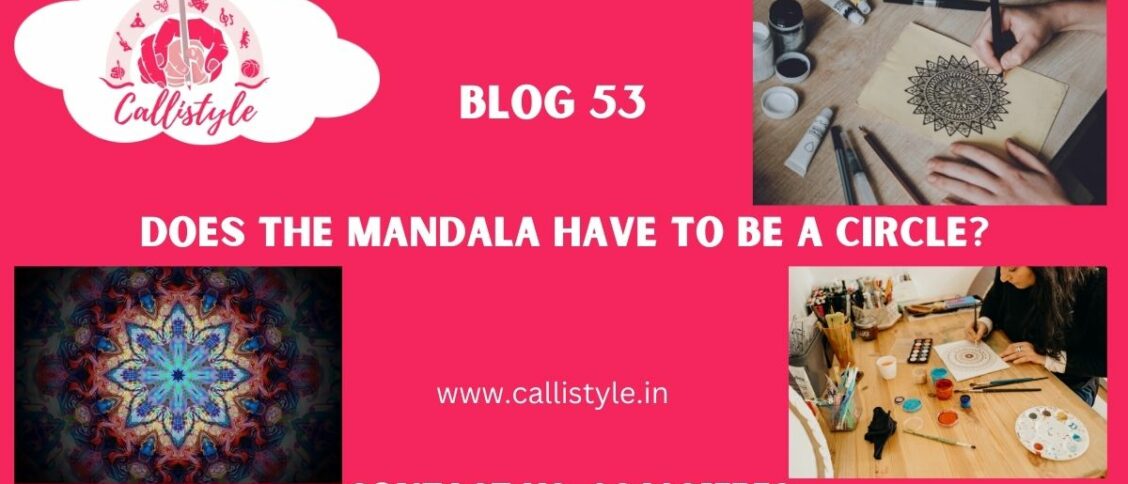Does a Mandala Have to Be a Circle? Understanding the Forms and Meanings of Mandalas.
Does Mandala Have To Be a Circle?
At the heart of meditative mandala art lies deep symbolism – but does that sacred significance come exclusively packaged within a round form? Can meaningful mandalas take shapes beyond the standard circle? While the symmetrical circular designs dominate perception, exploring the term’s meanings and alternative configurations opens newfound flexibility embracing rectangles, triangles, and more.
Does Mandala Have To Be a Circle : A Mandala is a sacred, often circular, design. The word mandala derives from a sanscrit word meaning circle. While mandalas are most often rounded or circular (i.e., more symmetrical), this is not necessarily the case.
Like all visual vocabularies, the patterns and shapes comprising mandalas carry certain cultural associations whether Created casually or ritualistically. So to broaden conceptual horizons, let’s survey how mandalas operate in spiritual contexts and analyze what design qualities prove most pivotal.
Defining the Term Mandala
Deriving from the ancient Sanskrit word for “circle”, at first glance mandala connotes roundness. But read deeper. Originally signifying “containment”, “essence” or “wholeness”, metaphysical manda denotes a conduit of cosmic forces – the circle channeling a deity’s power outward. What matters more than circular boundaries? The power-bestowed patterns inside.
Purpose and Function Over Form
In Eastern religions, creating complex geometric mandala diagrams serves various functions:
Guiding meditation via focal beauty
Mapping internal psychological aspects
Symbolizing the divine realm
Modeling balance and unity
Providing a sacred site for ceremonies
Note the consistent emphasis on purpose and unity above pure aesthetics. Any coherent design radiating harmoniously from the center outward directs awareness accordingly.
Broadening Shape Interpretations
Given the significance of organized motifs over dimensions, mandalas logically needn’t be confined to circles. Consider:
Square mandalas in Tibetan traditions represent stabilized wisdom
Triangular compositions inspire an upward spiritual focus
Rectilinear patterns align directionally across altar spaces
Ornate filigrees as framing devices concentrate attention
Multi-sided graphics or textures serve equivalent psychological functions as circular medallions in guiding mindfulness if organized symmetrically with clear focal points. Craft according to the desired effect.
Crafting Personal Mandalas
When crafting personal mandalas, intention matters more than form. First, meditate on specific goals or areas needing balance. Next map associated images, colors, and symbols intuitively before rendering final patterns.
Let organizational coherence shine through above dimensional decisions, whether circular, rectangular or triangular. Any intentional design created mindfully manifests the mandala essence of enlightened wholeness through the manifested form. Follow innate wisdom – where pencil and brush lead, trace those symbolic trails into fresh understandings.
Why Callistyle?
Callistyle is an ed-tech company that makes you fall in love with learning regardless of age, Callistyle can help you enhance your creativity and cognition with our Extracurricular creative courses.
With mentors with over seven years plus experience, a unique teaching methodology, and guaranteed satisfaction, Callistyle is where you should consider joining.
- Register for Demo classes.
- Certificate provided.
- Individual attention was provided.
- Only two students in one batch.
- Flexible class schedule & timing.
- 12×7 doubts clarified
- Best results guaranteed!
- Flexible payment method.
- 7 years plus experienced Trainers.
- Assistance is provided post-course completion also.
Register for a Free Demo Class now!
Contact 8946017752 to know more about the courses.








